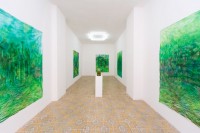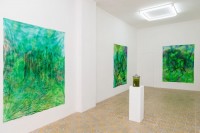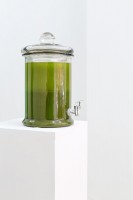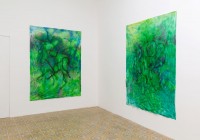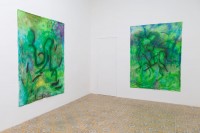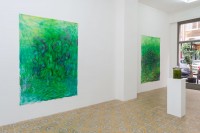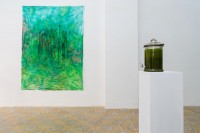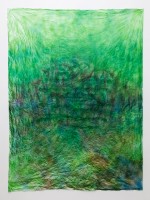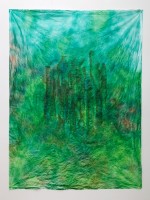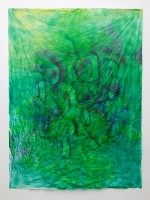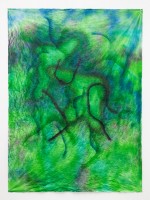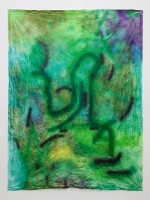Katharina Fengler
SUPERFOOD
16 Maggio – 21 Luglio 2015
While talking about food choices and health may be seen as a question of nutrition, cultural context or even political attitude, it could also be considered as an expression of how one relates to the world. Eating habits are a direct indicator of what relationships are built to the “outside” and the “inside” as one can directly experience how outside object, outside energy becomes inside matter and thus transforms into other energy. Living in a privileged surrounding where food choices can actually be made with full responsibility of what is ingested, the process of eating automatically becomes a reflection of one's belief systems and mental state.
It's uncertain where the term "Superfood" originally came from, but it can be traced back to someone called Aaron Moss who used the term in an article on nutrition in 1998. Since then the term has been generously adapted by the food industry and marketing world to promote food that is supposed to be specifically healthy and in that sense superior to other "food". It seems that in a country like The United States where the majority of food may be considered unhealthy, the term "Superfood" finds its widest use. In the European Union, on the contrary, it's forbidden to use the term "Superfood" for marketing reasons "unless accompanied by a specific medical claim supported by credible scientific research" (http://en.m.wikipedia.org/wiki/Superfood). While "Superfoods" are finding there ways into German vocabulary and homes, they still have very little importance in countries like Italy that strongly hold onto traditional food as part of their cultural identity.
Within the wide range of foods that claim to be "Super", it's mostly the green foods that are standing out as the "Superheroes" in the supermarkets. This could be explained by their biophysiological composition and therefore nutritional value, but it is also the green in itself that has an expressive impact on one's perception. In color psychology the color green is supposed to have balancing, soothing effects, as it is said to be calming and healing. It stands for growth and well- being and is associated with other numerous benefits.
Instead of offering art historical underpinning and justifying contextualization, the exhibition SUPERFOOD imbibes the juice of marketing and claims to be nothing but healthy. Green, as a predominant color in the paintings, should leave you feeling calm, refreshed and compassionate. The same way as eating is a reflection of one's deepest most intimate relationship to the world, the way one experiences an abstract painting echoes the way one relates to the world. This again becomes a reflection of one's mental state and belief systems. Not only are you what you eat, but you also become what you ingest on a sensory level.
All paintings in this show are airbrushed on Tyvek, a multi-functional material that is often used for packaging and transporting both, food and art. Wheat grass shots will be served during the opening reception.
Katharina Fengler
Humboldt University, Berlin (DE), studied Art History and Philosophy 2000 - 2002
Zurich University of the Arts (CH), studied Photography/Arts & Media 2003 - 2007
